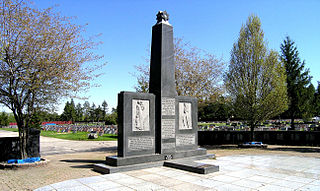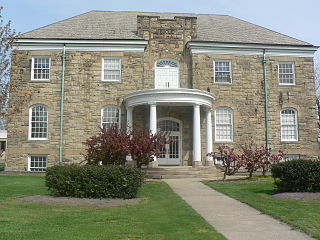
Cuyahoga County is a large urban county located in the northeastern part of the U.S. state of Ohio. The county seat and largest city is Cleveland. As of the 2020 census, its population was 1,264,817, making it the second-most populous county in the state.

Plains is a city in Meade County, Kansas, United States. As of the 2020 census, the population of the city was 1,037. It is located along U.S. Route 54 highway. It is notable for the width of its main street which is the widest in the United States at 155 feet 5 inches (47.37 m) across.

Bedford Heights is a city in Cuyahoga County, Ohio, United States. The population was 11,020 at the 2020 census. A suburb of Cleveland, it is a part of the Cleveland metropolitan area.

Broadview Heights is a city in southern Cuyahoga County, Ohio, United States. The city's population was 19,936 at the 2020 census. A suburb of Cleveland, it is part of the Cleveland metropolitan area.

Brook Park is a city in Cuyahoga County, Ohio, United States and a suburb of Cleveland. As of the 2020 census, the population was 18,595.

East Cleveland is a city in Cuyahoga County, Ohio, United States. The population was 13,792 at the 2020 census. It is a suburb lying east and south of Cleveland and west of Cleveland Heights.

Euclid is a city in Cuyahoga County, Ohio, United States. Located on the southern shore of Lake Erie, it is an inner ring suburb of Cleveland. The population was 49,692 at the 2020 census, making it the fourth largest city in Cuyahoga County.

Garfield Heights is a city in Cuyahoga County, Ohio, United States. The population was 29,781 at the time of the 2020 census. A suburb of Cleveland, it is a part of the Cleveland metropolitan area.

Highland Heights is a city in Cuyahoga County, Ohio, United States. The city's population was 8,719 as of the 2020 census. An eastern suburb of Cleveland, it is part of the Cleveland metropolitan area.

Lyndhurst is a city in Cuyahoga County, Ohio, United States, and an eastern suburb of Cleveland. The population was 14,050 at the 2020 census. A small part of Lyndhurst was originally part of Mayfield Township.

Maple Heights is a city in Cuyahoga County, Ohio, United States. It is a suburb of Cleveland. The population was 23,701 at the 2020 census.

Mayfield Heights is a city in Cuyahoga County, Ohio, United States. The population was 20,351 at the 2020 census. An eastern suburb of Cleveland, it is part of the Cleveland metropolitan area.

Middleburg Heights is a city in Cuyahoga County, Ohio, United States. It is a suburb about 11 miles (18 km) southwest of downtown Cleveland. The population was 16,004 at the 2020 census.

Richmond Heights is a city in Cuyahoga County, Ohio, United States. The population was 10,801 at the 2020 census. A suburb of Cleveland, it is part of the Cleveland metropolitan area.

South Euclid is a city in Cuyahoga County, Ohio, United States. It is an inner-ring suburb of Cleveland located on the city's east side. As of the 2020 census, the population was 21,883.

University Heights is a city in Cuyahoga County, Ohio, United States. The population was 13,914 as of the 2020 Census. Located 8 miles (13 km) from downtown Cleveland, it is a suburb of the Cleveland metropolitan area.

Warrensville Heights is a city in Cuyahoga County, Ohio, United States. It is an eastern suburb of Cleveland. The population was 13,789 at the 2020 census.

Westlake is a city in Cuyahoga County, Ohio, United States. It is a suburb of Cleveland located 12 miles (19 km) west of downtown Cleveland. The population was 34,228 at the 2020 census.

Wickliffe is a city in western Lake County, Ohio, United States. The population was 12,652 at the 2020 census. A suburb of Cleveland, it is part of the Cleveland metropolitan area.

Willoughby Hills is a city in Lake County, Ohio, United States, along the Chagrin River. The population was 10,019 at the 2020 census. A suburb of Cleveland, it is part of the Cleveland metropolitan area.


























